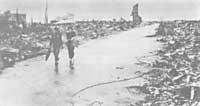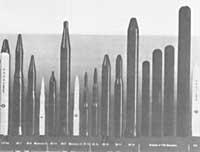Peace in the deserts

To begin with, it must be said that the name of the Star War that has been put on this American project does not have too much sawn with its essence. Among them is the influence of movies and science fiction books. Terms similar to those used in the space war or the Maginot space line would be more precise in describing all this. However, his official name would be something like: Strategic Defense Program. Reagan formulated this when he published the idea.
Objectives
That this program has really ambitious goals. Construction of an airtight barrier called a space umbrella. This barrier would not allow nuclear warhead contact with the American people. To do this, the necessary weapons and systems will be developed.
Most of these weapons will be placed in space. Some already exist (anti-missile missiles, for example) others are being born (lasers) and others can be considered as a fierce scientific occurrence (particle beam cannon). The futuristic problem no!
Overcome panic balance
This pretension, which the reader will have much to discover, revolutionizes the key of the relations between these two current superpowers.
Until now, relations between the two powers were based on what was called dissuasion. Everyone knows that they cannot attack the other without receiving the same response as the attack. That is, the two would go to disaster. One for fear, do not attack. This situation is called the Balance of Terror. One nation for fear of punishment will not attack the other and deterrence occurs.
But, in some way, if someone were to ensure the way to stop the response of the other (what cannot be done today) he would put himself above the other and also have many strategic advantages.

This is Reagan's intention. This leads us to the beginning of a new weapon quartet. It can be assumed that the Soviets do not want to offer Americans strategic advantages of this size, so they will safely start in the design of systems similar to the Americans.
Two contradictory opinions
As in any problem of this level, there have been immediately opposing and favorable opinions. Aside from the ethical and moral problems that have been launched in favor of this project, they claim that the project will be a huge boost for American science. His big bet will be that the conclusions and answers obtained will not only benefit the military but also the civilian. Cutting-edge technologies will have a big boost.
Opponents, however, claim that it is never profitable that the money to spend (1 billion dollars = 200 billion pesetas) is so great. On the other hand, they emphasize that 100% protection in no case can be certified. In addition, they consider it legitimate for each measure adopted for the elimination of warheads to have its own countermeasure in a short time. In short, such a project can lead the two powers into a vicious circle.
What threat do you want to avoid?
Both powers have installed most of their nuclear weapons in their missiles. Both in missiles that are departing from a silo (ICBM = Intercontinental Ballistic Missi les = Intercontinental ballistic missiles) and in those that can be launched from divers (SLBM = Submarine Launched Ballistic Missiles = Ballistic missiles pulled from the Urpi). After being launched, they make their full journey into space to enter the atmosphere and touch their talent.
The trajectory of a missile of these characteristics consists of four different steps. In each of these phases the missile poses different detection and elimination problems.
In the first step, the missile, like artificial satellites, occupies a burning height (2 3) for two or three minutes. Once the last phase is abandoned, the second step of the flight begins. The missile continues to climb for several times following a ballistic route. Then take the road to earth through an inflection. This step takes about ten minutes.
The third step is the same as the second in the single missiles. In multichannel missiles no. The hatch carrier, called a bus, starts releasing the warheads one by one according to a previously prepared plan. The bus takes about 20 minutes to complete the work. The fourth step begins when the warheads enter the atmosphere, it takes about a minute to hit the target.
As mentioned above, each of these steps has its own characteristics and the path to a deleted mission will also be different. However, US strategists believe that the first step is best suited to ending the mission.
What weapons will be used?
The following figure shows the path taken by an intercontinental missile and the defensive path proposed by the Strategic Defense Program.
a) in this first phase the mission has been launched and goes out into space to carry out its journey. As soon as it has been released, it is detected with satellite monitoring for the cause of the heat emitted by the thrusters. The defense mechanism is launched immediately. Classic projectiles and lasers located on satellites will be used. Lasers located on the ground will also be used. These will be reflected in a satellite mirror in orbit and directed towards the spring.
b) in the second phase a ballistic box office tour is followed. The lack of propellers underway will make detection difficult. Radar and radar aircraft will be used on Earth. In addition, detection will be even more difficult in multiojival missiles. These, along with nuclear warheads along the entire course, are all kinds of waste (aerosols, metal garlic, metal slice, etc.) will free those who prevent much the work of the radar. In this phase, classic shells launched from both surface and satellites will be used. X-ray lasers will also be used, which will probably go from diving into satellites that will be put into orbit at the time.
c) in the third phase the warheads have been reintroduced into the atmosphere. At this time all the trash released for the camouflage is light, so it is left behind and on the radar screens will clearly see the warhead. Although lasers are used at this stage, classic projectiles are preferably used. It will be very important to defend the first step, which will be the most effective. For two reasons, the first will then be when it is easier to detect and the second, that the targets will be less.
The weapons we mentioned above from Axal-Axal will now be more specifically indicated.
Lasers.- A priori are the most suitable defensive weapons. They are of great precision, they are suitable for the interpretation of thin elongated like missiles. Lasers can act in two ways: either through heat, for this it is necessary that they sound several times in the same place, or through an energy shock, all the power is released in an instant.
Theoretically ideal, of course, has practical problems. The energy needed to have a laser beam of sufficient power is enormous. In addition, laser beams are not entirely parallel. Parallelism will subordinate it to the quality of the mirrors it focuses. Therefore, as the distantization increases, the dispersion increases and touching the target can be worrying. Instead of concentrating the energy at one point, it will concentrate on a surface with the power losses it entails.
Another problem is the use of lasers from the ground. The laser will cause air molecules to subtract some of the energy it carries.
Weapons by particle beams.- At the moment, this type of weapons must be limited to science fiction. They are based on particle accelerators. Negatively charged hydrogen atoms (those that exceed an electron) will be accelerated by a violent electric field. At the output of the accelerator a filter will remove the excess electrons, the resulting particles will be neutral.
To realize the influence these particles will have when hitting with the target, it is necessary to think that dust particles that drag the wind during storms make us feel our skin hit.
It is believed that these devices will be placed in space, so the problems of miniaturization will be profound, apart from meeting the energy requirements.
Conventional weapons.- They will be conventional shells. The cause of the kinetic energy they carry when they meet the missile will cause a terrible shock wave that will burst the mission.
Nuclear weapons.- Includes anti-missile missiles. This area is already very developed, since it is based on part of the current defensive policy of the two giants.
Countermeasures
All measures usually have their countermeasure. In this case it also happens. Then some countermeasures are suspected. In addition, the measures have no great advantage, they are already developed and are well known.
–Active countermeasures– Anti-satellite weapons are missiles, satellites that kill satellites, nuclear loads put into orbit, space mines, etc.
-Passive countermeasures, which include shortening of combustion time, distortion of combustion flame, consolidation of missile structures, etc. These would be used in the first step. The most commonly used countermeasures for steps 2 and 3 will be the launch of false warheads, nylon and aluminum wires or aerosols that prevent radar. In the fourth phase will be used gliding warheads, warheads that could change course, etc.
Conclusion
To explain the above, from now on the reader can have an idea about this complicated problem. We at least have our suspicions. If this project will not be the half-night cough of the goat. Perhaps boutade to scare the Soviets! Time will tell.
The U.S. Department of Defense considers that an ideal umbrella of protection requires three levels: global defense (whose elements will be mainly located in space); regional defense and defense of zones (cities and military installations). Each of these levels should at least theoretically intercept 90% of incoming missiles. If in this way 1000 missiles were fired, 100 would pass the first, 10 the second and only one would exceed the third and touch the target.






